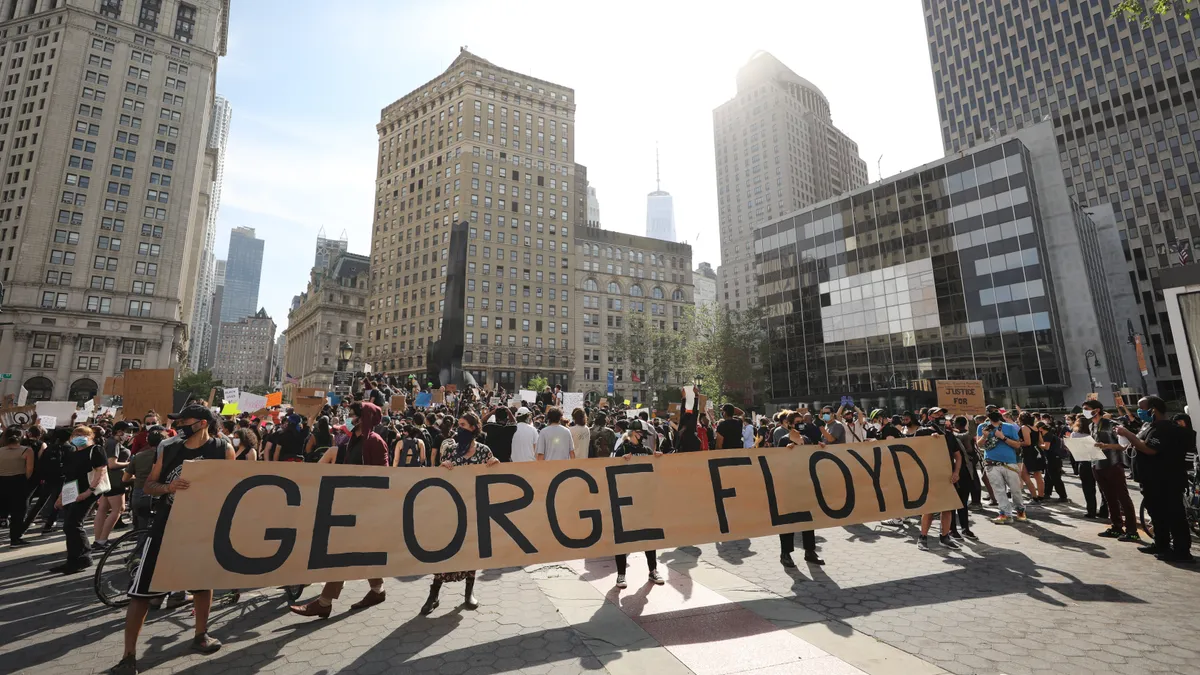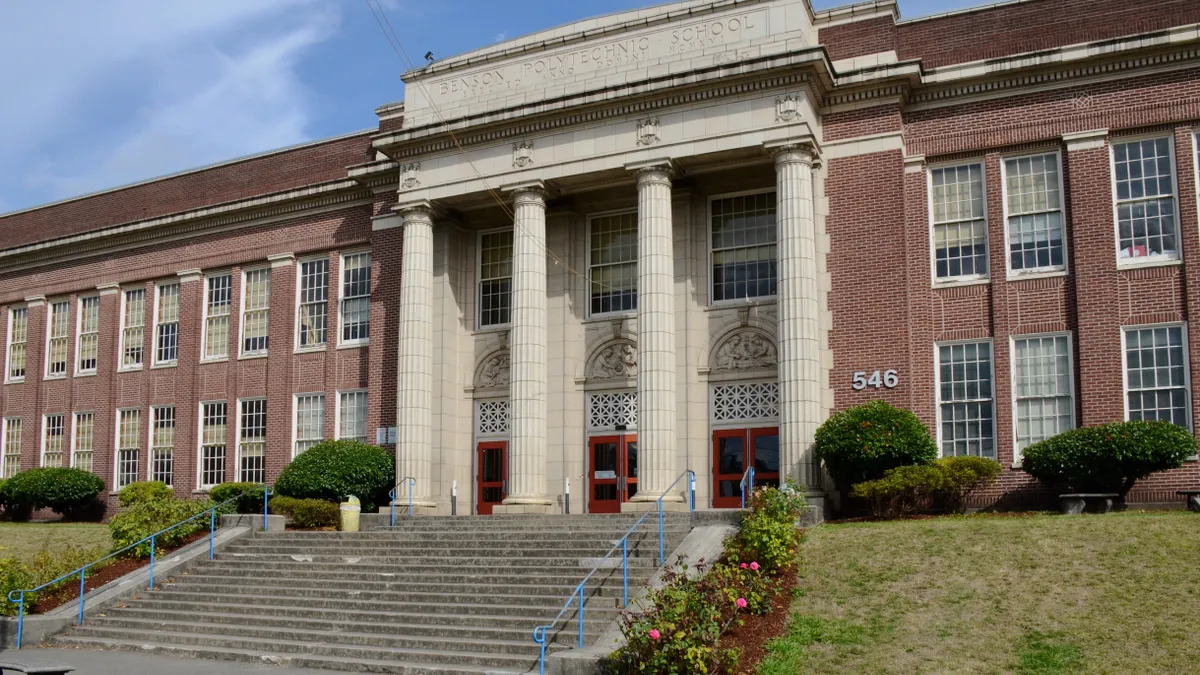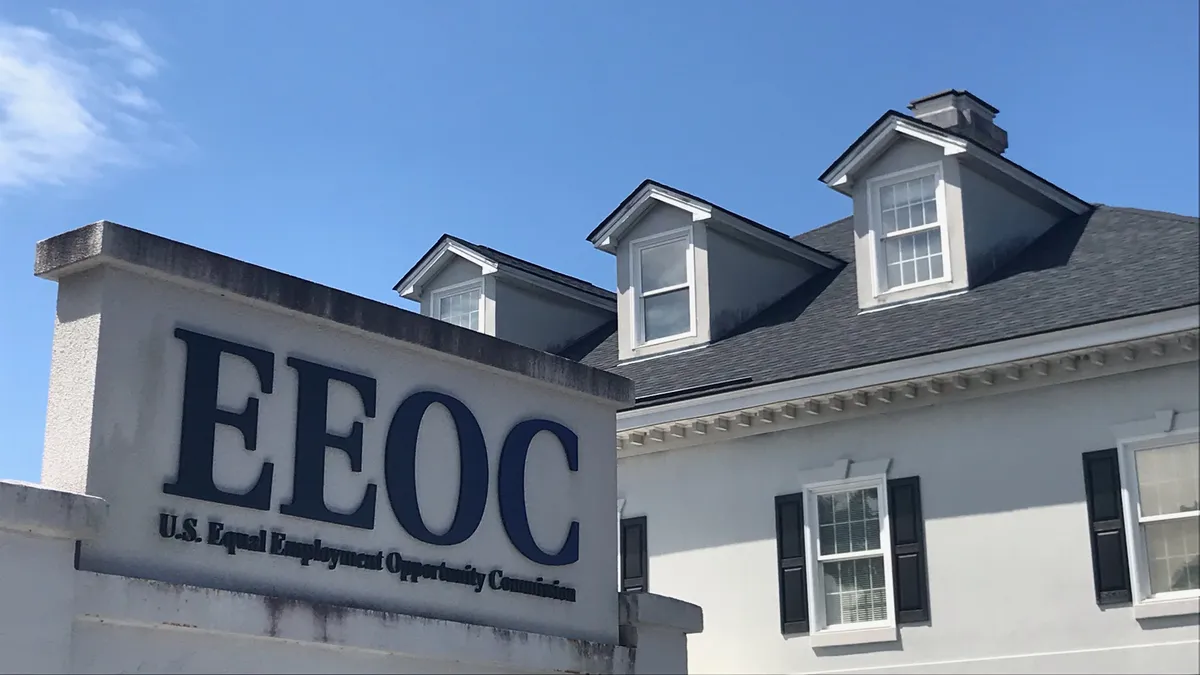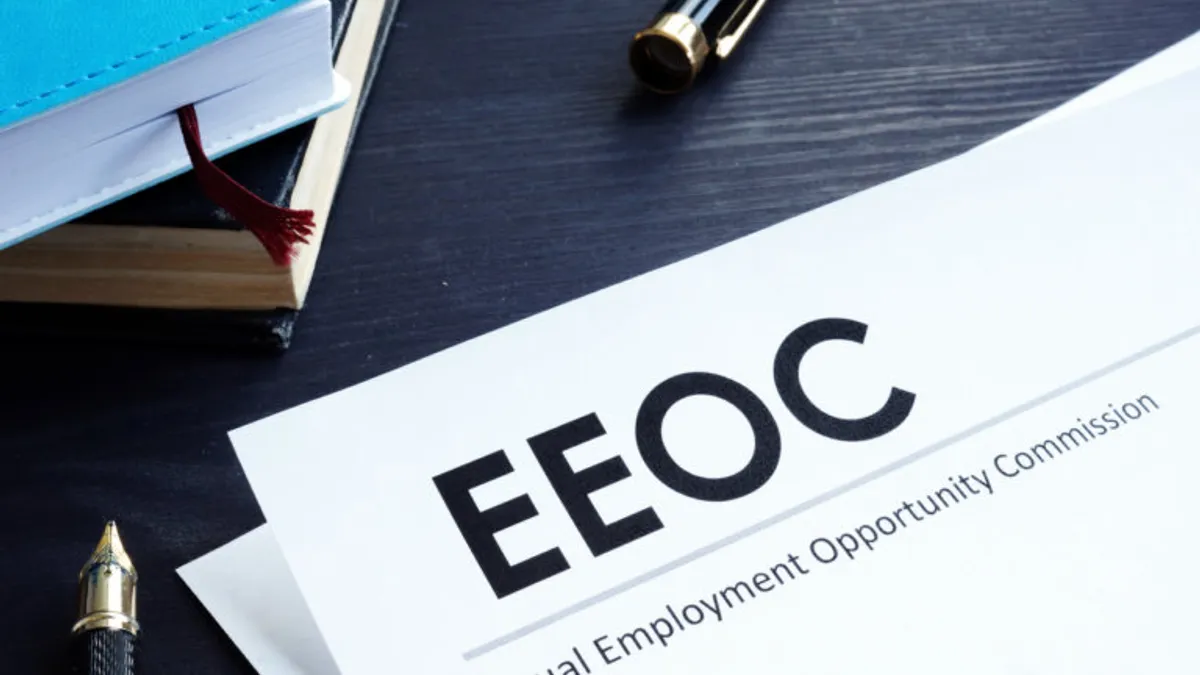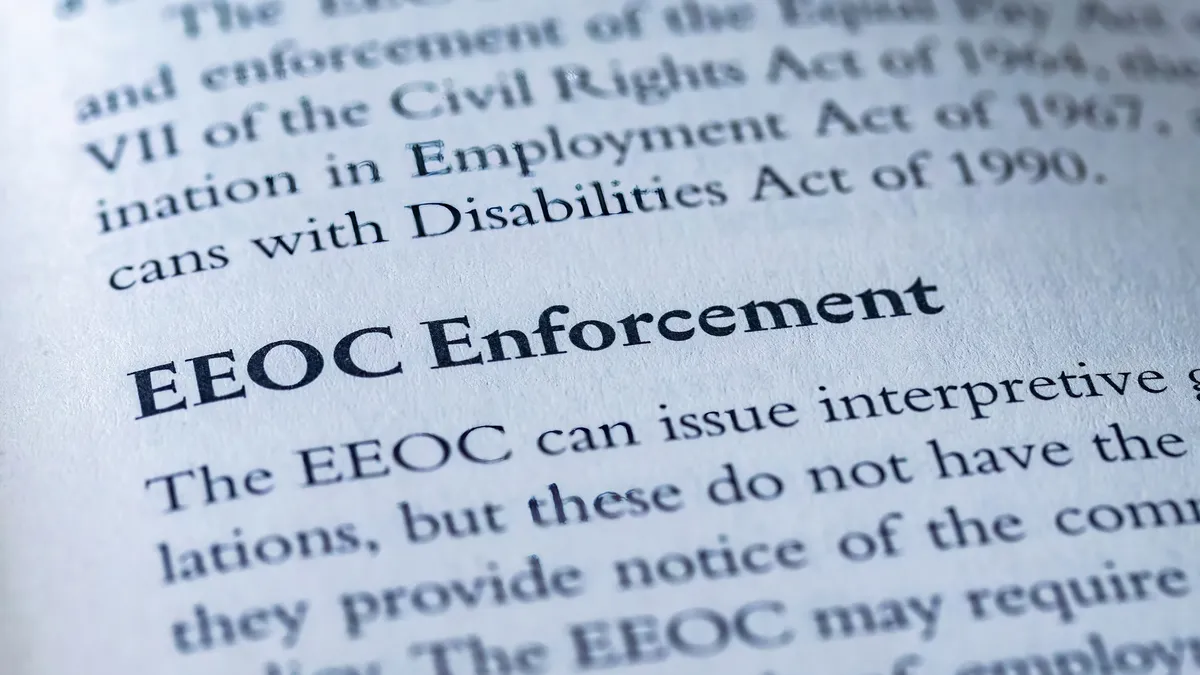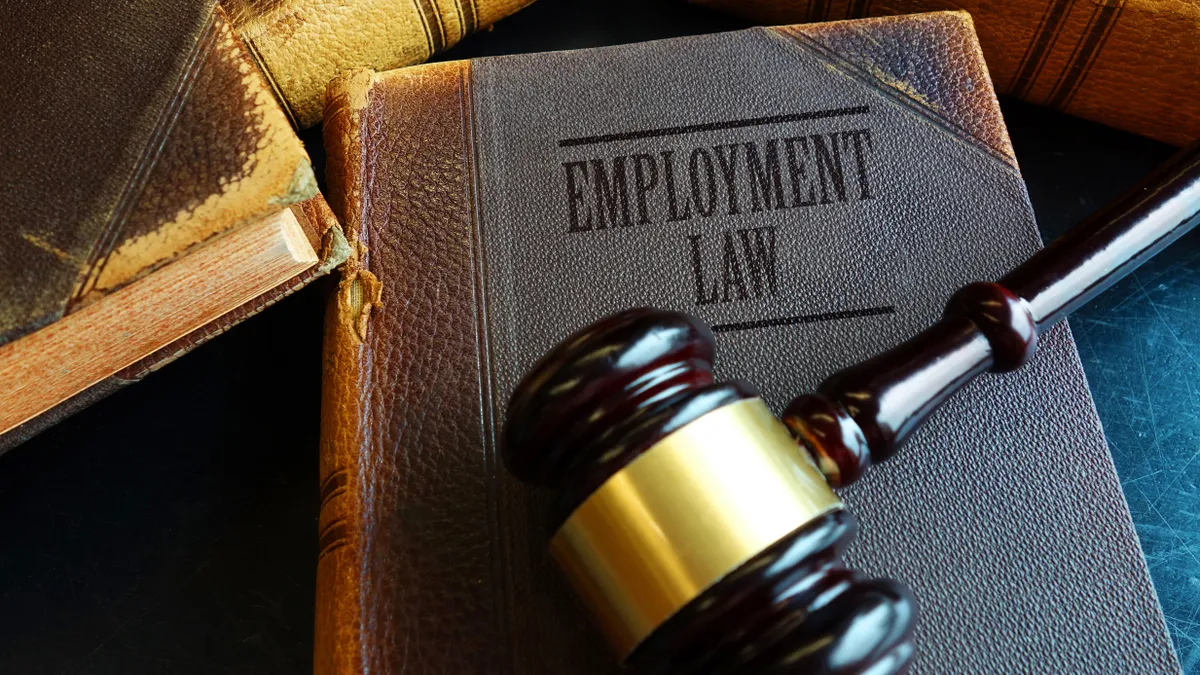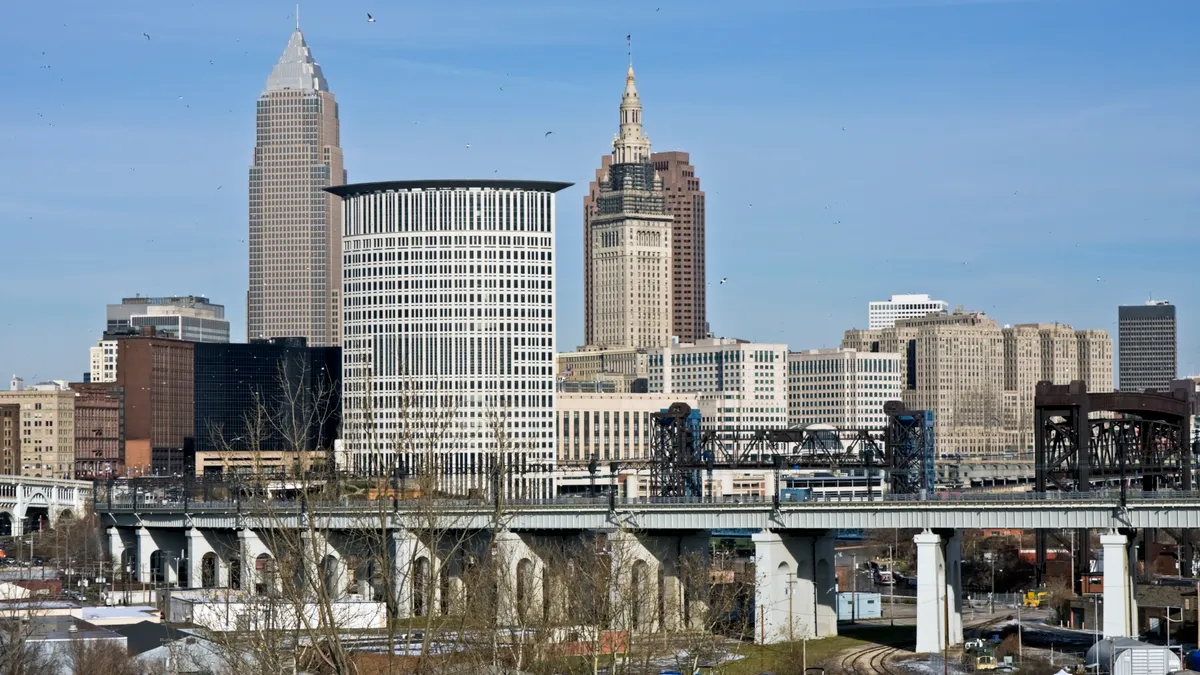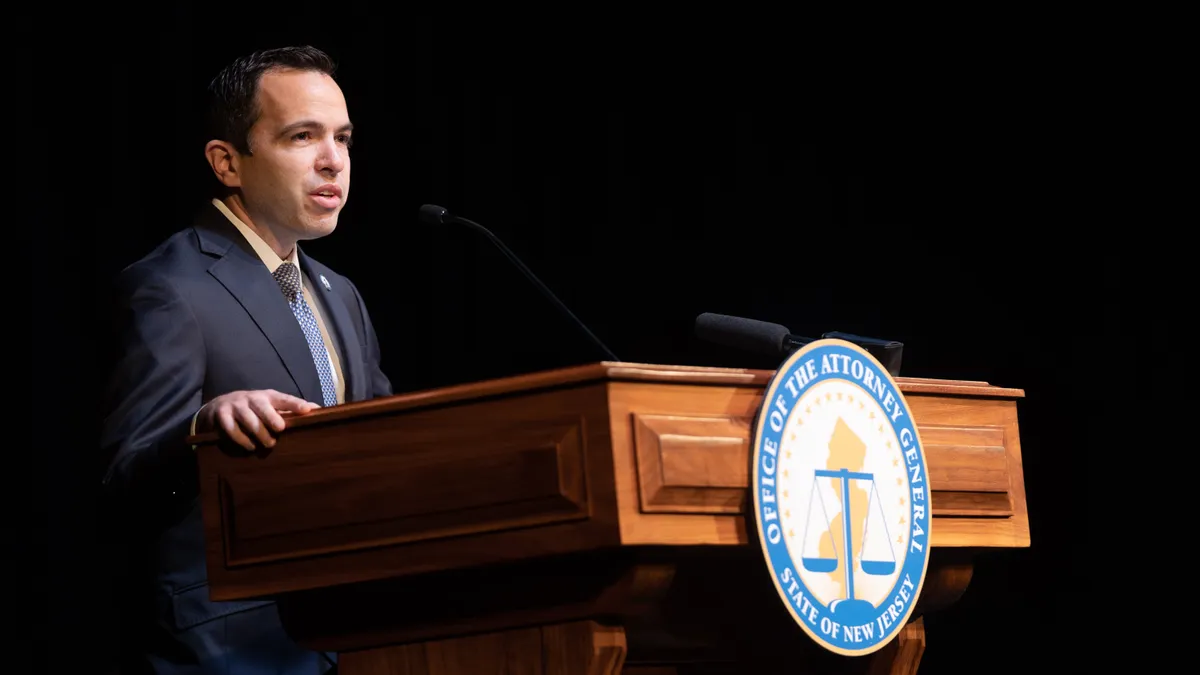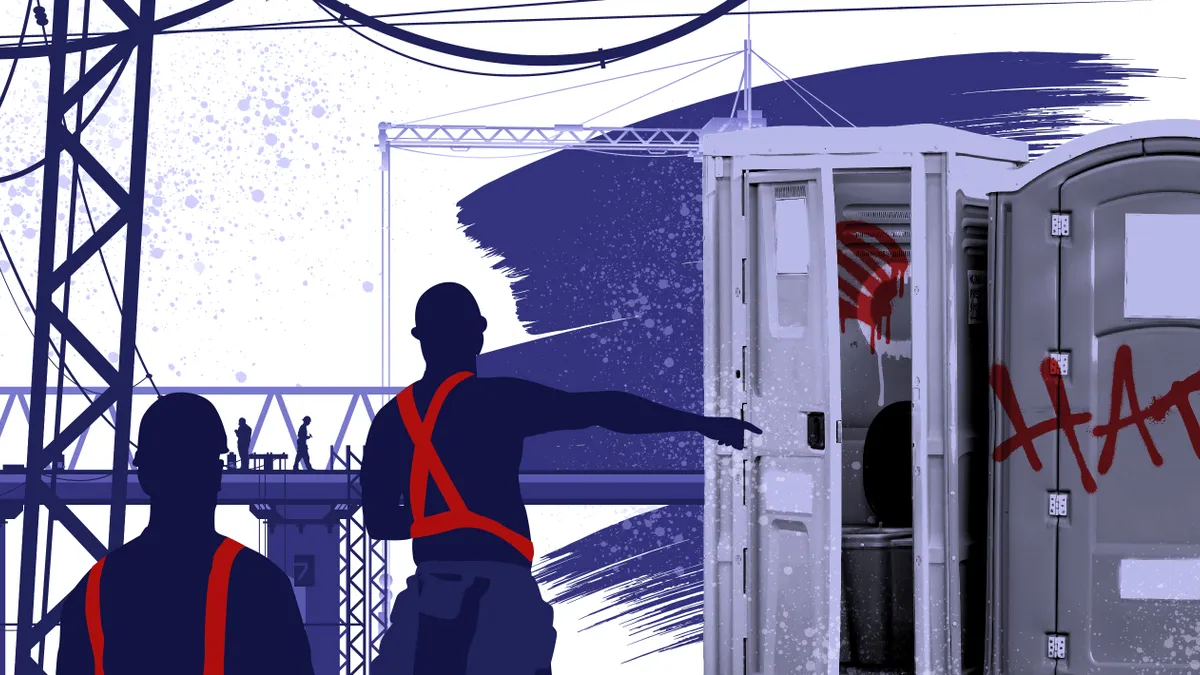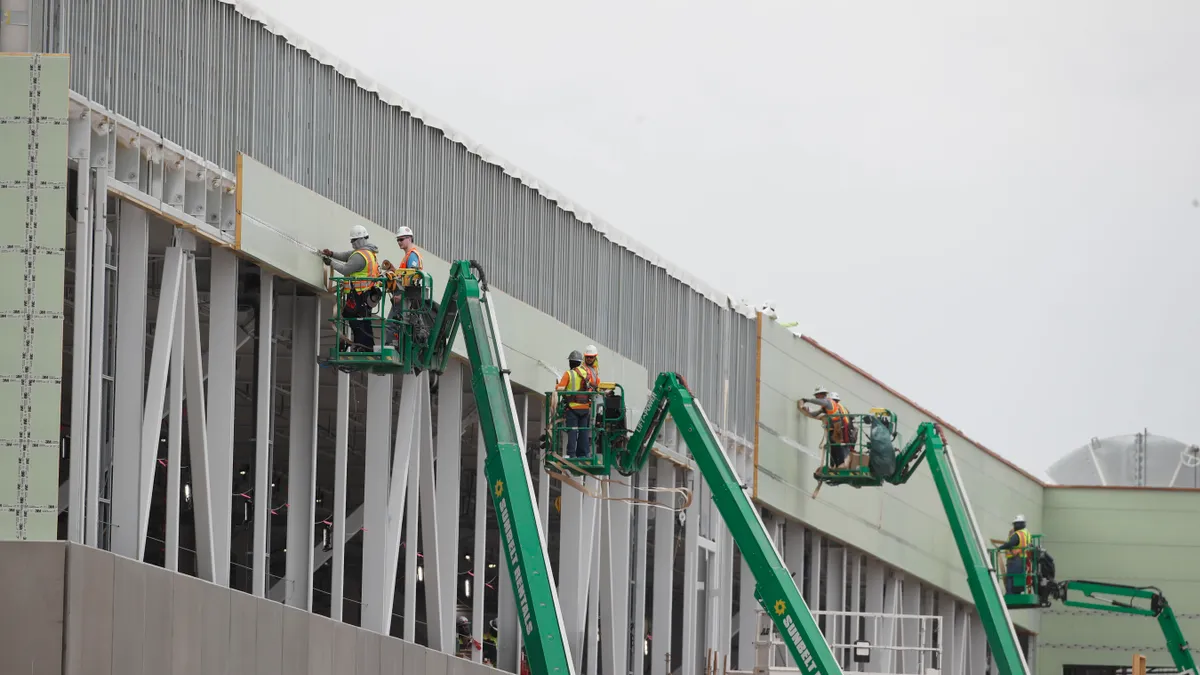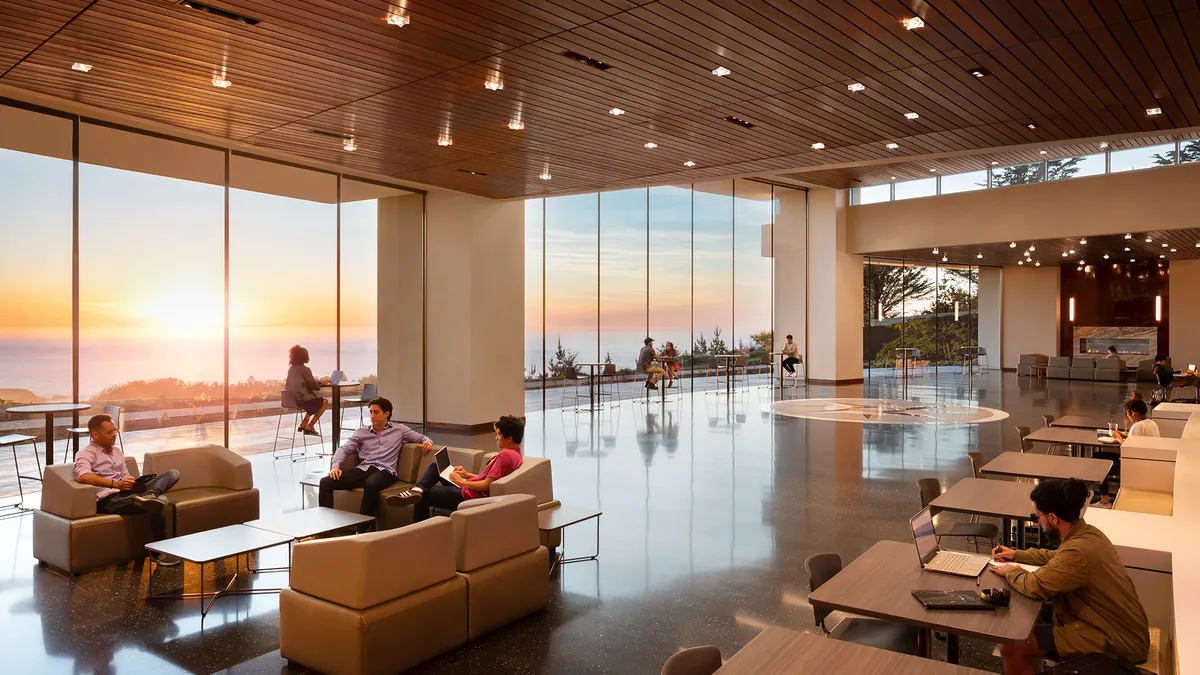Dive Brief:
- The Equal Employment Opportunity Commission spotlighted construction’s culture of racism and sexual harassment Tuesday in a hearing where a Black forklift driver said he was encouraged to wear a noose around his neck for Halloween, and a female ironworker testified women developed urinary tract infections after being pressured not “to go to the bathroom too much” on jobsites.
- The five presidential appointees who sit on the commission, the nation’s top agency charged with combatting workplace discrimination, repeatedly put the hearing in context of the $1.2 trillion Infrastructure Investment and Jobs Act, and their obligation to make sure it doesn’t fund an environment of hate.
- After describing other cases litigated by EEOC against construction firms that included threats of lynching, sexual assault and even murder against women and people of color, Chair Charlotte Burrows said now was the time to make sure public money doesn’t perpetuate that pattern. “The federal government and our public and private partners have really a historic opportunity and a duty to ensure that taxpayer money does not fund harassment or discrimination, and that the doors of opportunity are open to everyone,” Burrows said during a press briefing following the hearing.
Dive Insight:
After George Floyd's 2020 murder triggered a social reckoning with racism in America, dozens of racist incidents involving nooses and hateful grafitti emerged on construction jobsites. The hearing’s scope went beyond the headline-grabbing events of recent years to trace the genesis of racism in the industry.
Trevor Griffey, author of “Black Power at Work: Community Control, Affirmative Action, and the Construction Industry,” testified how unions' exclusion of Black workers from skilled construction trades in the 1940s, and resistance to desegregate in subsequent decades, helped lead to the larger civil rights movement.
A history lecturer at University of California, Irvine, Griffey described the repeated resistance to integration in the industry.
“Not even the passage of Title VII of the Civil Rights Act was sufficient to compel construction contractors and unions to desegregate in the mid-1960s because early on, enforcement of Title VII law relied on voluntary compliance,” Griffey said. “Neither the contractors nor unions were very interested in voluntarily changing their system.”
Continued challenges
But while unions’ inclusion initiatives actively seek out women and people of color today, ironworker Japlan “Jazz” Allen told commissioners that being a Black woman in the trades exposed her to sometimes being hired to meet diversity goals on projects, only to be laid off once they were fulfilled.
“Nine times out of ten, I'm the only woman, and not only am I a woman, I'm a Black woman,” Allen said. “That's a double barrier for me.”
Allen said women often don’t file grievances for the discrimination they experience on jobsites out of fear of retribution.
“The minute you go inside and try to make a grievance for something, you might be penalized and may never get a job again,” Allen said.
Women in general are held to a different standard than their male counterparts, she claimed, and pointed to restrooms onsite.
“We requested our own bathroom, which was in the collective bargaining agreement,” Allen said. “But now, well, the attitude was, ‘We don’t need you to go to the bathroom too much.’ Now you’re having a UTI because you’re holding your urine because you don’t want them to retaliate and think you’re going to the bathroom too much.”
Impacts on safety
For Gary, the Black forklift operator who successfully sued his employer for discrimination after his supervisor suggested he put a noose around his neck while the supervisor dressed up in a sheet for Halloween, the constant racist banter on jobsites posed a safety issue on the job.
“The maximum load I might be carrying at any given time is 10,000 pounds,” said Gary, who requested that EEOC withhold his last name for fear of retribution. “If my foreman… is over the radio joking and I lose my focus, I might just kill somebody. They can never go home to their family, and I can’t explain what happened in that situation.”
Ken Simonson, chief economist of the Associated General Contractors of America, highlighted the association’s Culture of Care anti-harassment initiative, while calling on EEOC to work with contractors to combat the problem, instead of imposing regulations.
“It's certainly appropriate to call out cases of harassment and discrimination, these are outrageous examples that no responsible employer or association support,” Simonson said. “We're glad to be publicizing that with you, but we think that going to mandates and restrictions is the wrong approach.”
In a post-hearing call with reporters, EEOC Chair Burrows said she hoped to build on the initiatives she’s seen the industry develop internally, but that increased enforcement of harassment laws was always an option.
“What we found is that these sort of broader issues when you want to have cultural change… the best way to get at something like that is for everyone to partner,” Burrows said. “We hope that that will work first…. And if we have to, then obviously we absolutely will continue to go ahead and bring those enforcement actions.”








